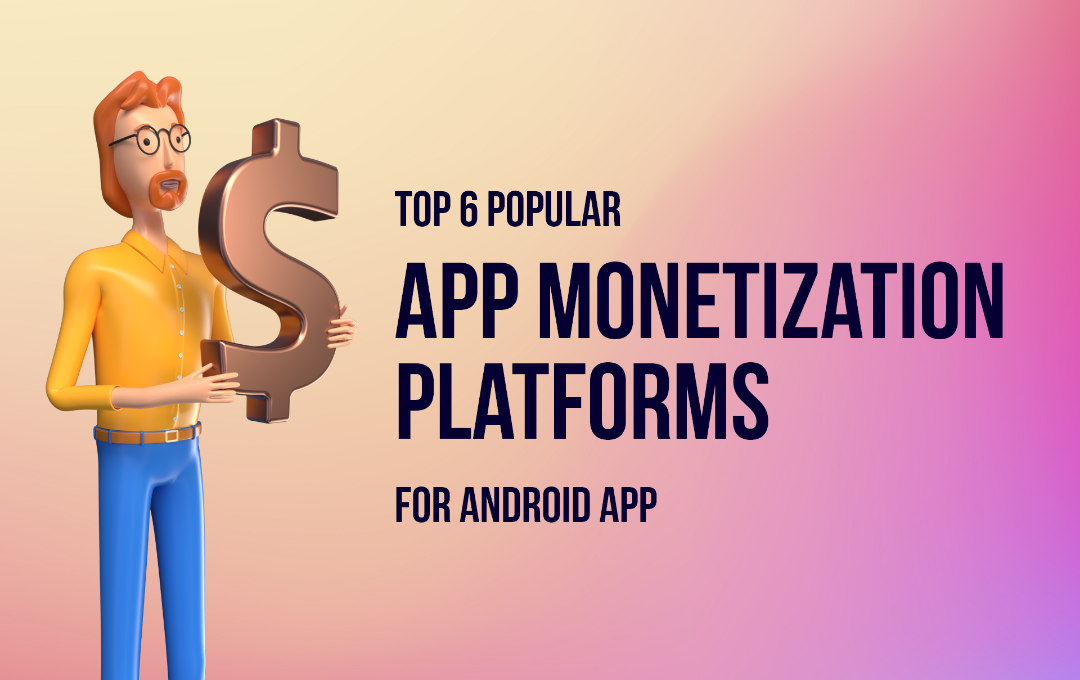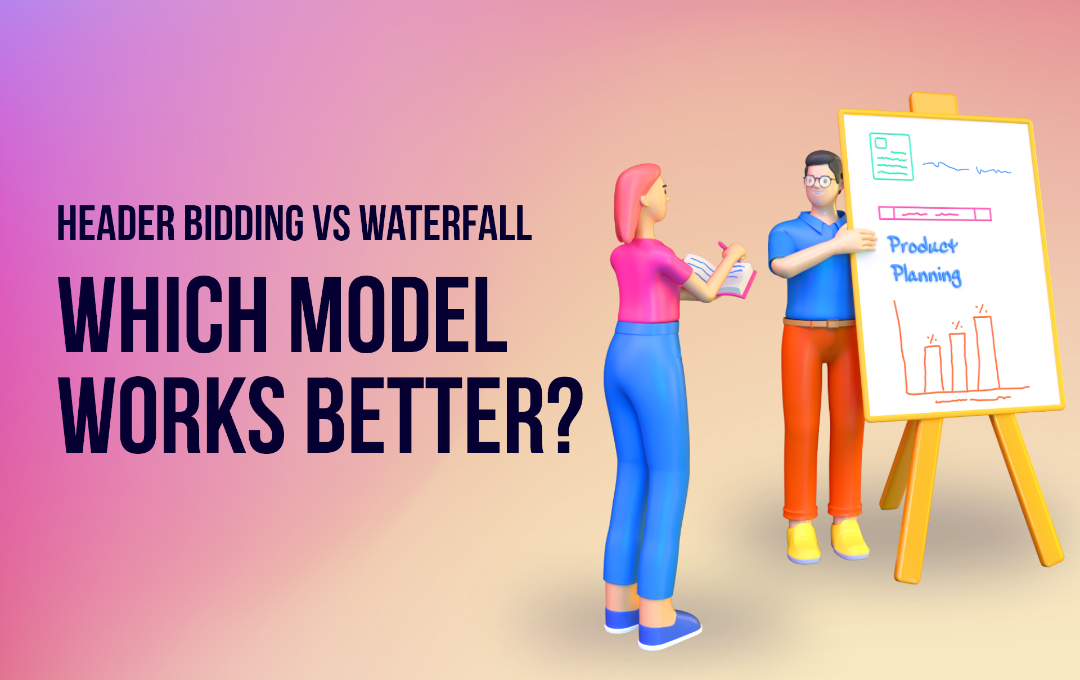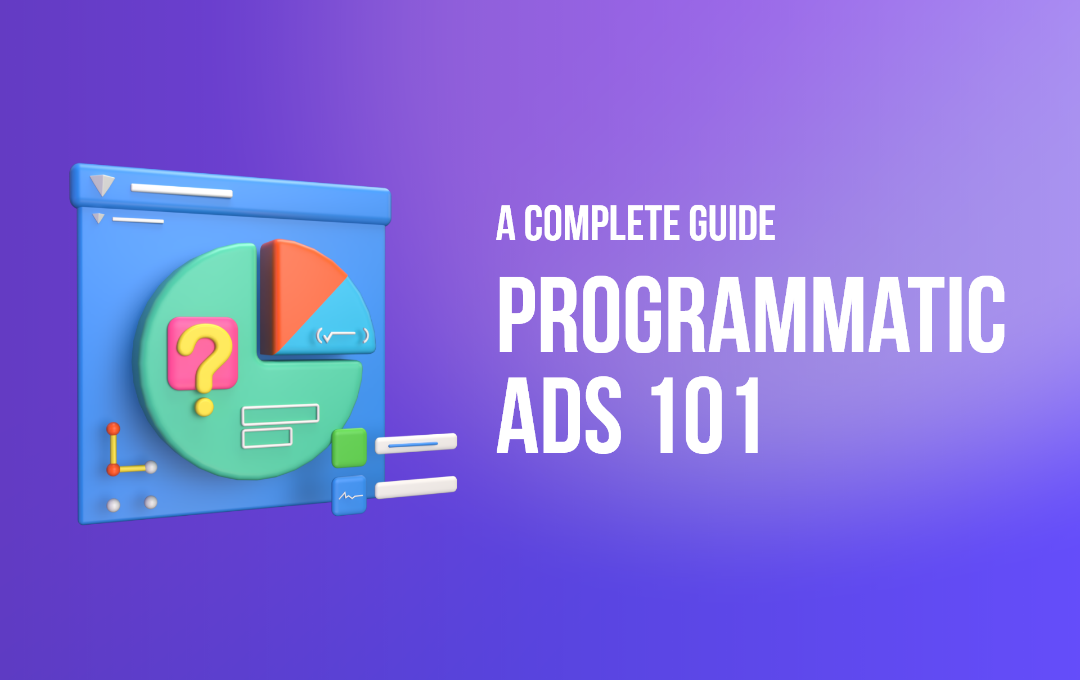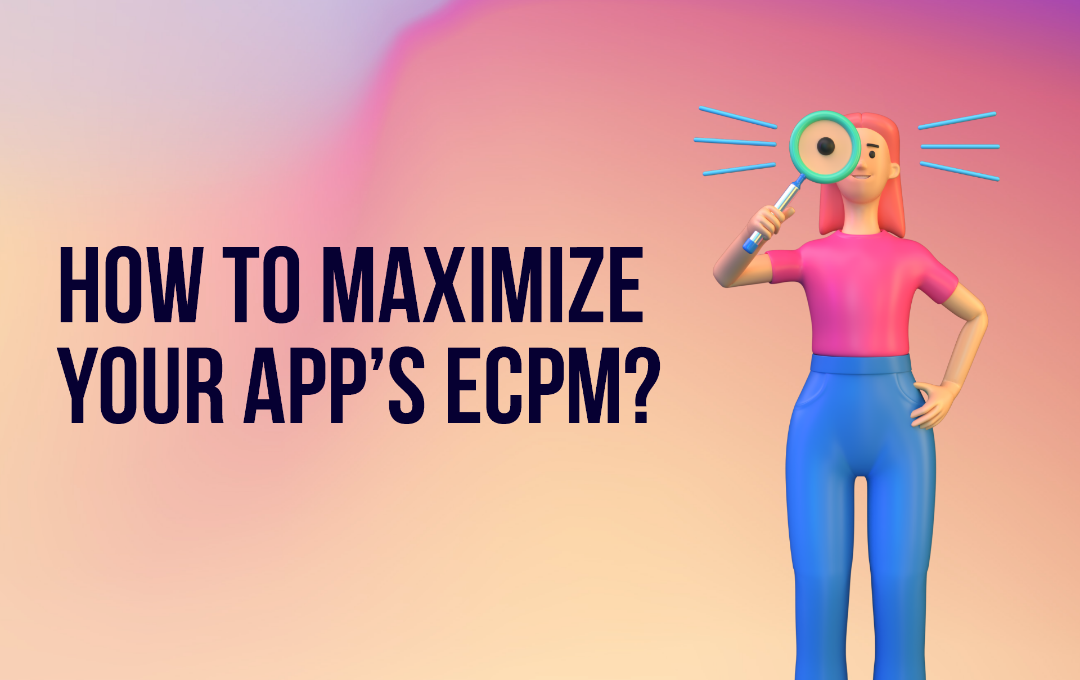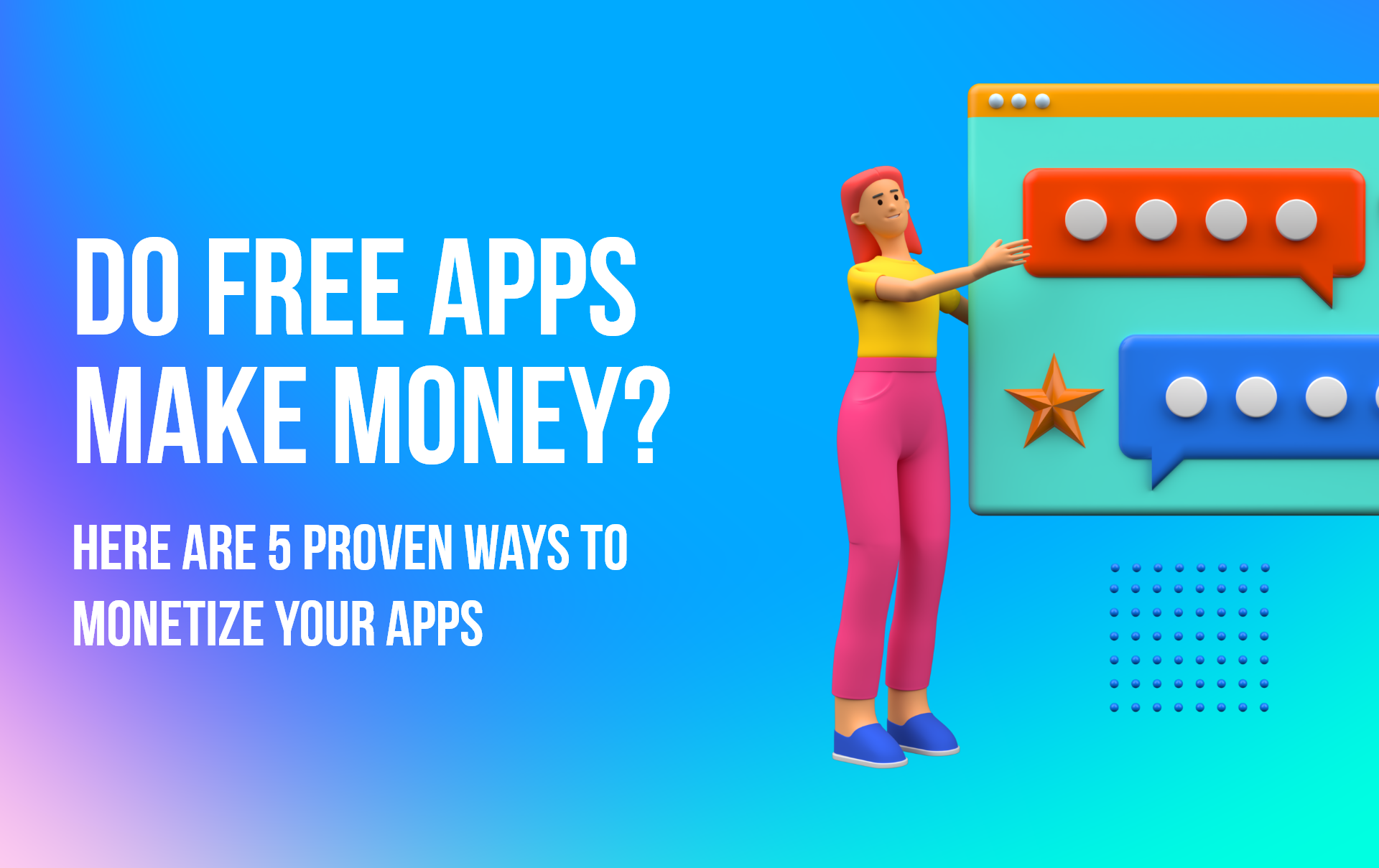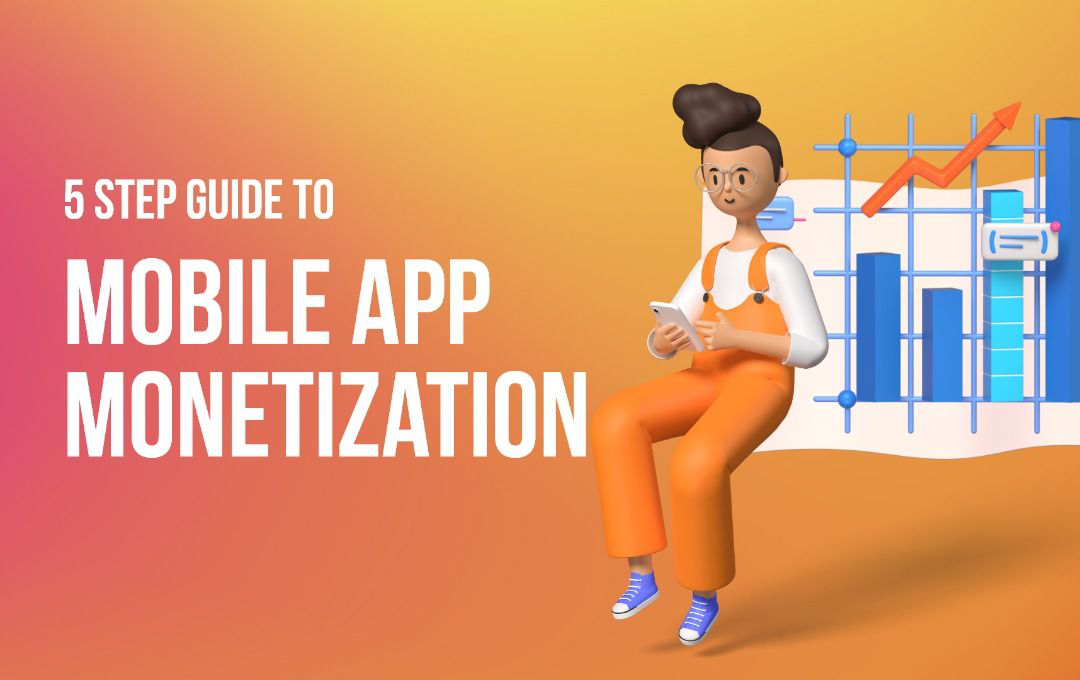
How to monetize a mobile app? Here's a complete guide
Among 7 billion people on Earth, out of which more than 5 billion people own a cell phone, and an ever-growing number of these are smartphones. Over the last five years, the number of people who access the internet through their mobile phones has more than doubled, including mobile app users.
As a mobile app developer, certain aspects of the industry can be irritating. One such example is trying to appease a broad group of users. When choosing to develop an app, the quest to support multiple users and come to terms with app monetization queries can be taxing.
This means that developers now need to come to terms with the fact that their apps are not just a platform; instead, they can be a significant source of income. That is what mobile app monetization is all about!
What is app monetization? And why is it Important?
App monetization or monetizing an app means making revenue from a mobile app without actually charging for it. Users generally want free apps but do not know that free apps are 98% of Google Play's revenue.
One of the options available to monetize an app is to advertise within the app itself.
Mobile app monetization is crucial because users would instead download a free app than a paid one. To account for this, the app business model needs to be readjusted. Developers need to shift their revenue-earning process from pre-download to post-download. This is where strategizing your mobile app monetization comes in. You need to make sure that two things happen when users download your app:
- Your app generates revenue.
- Your users and the user experience remain intact.
Most app builders forget to look into the second aspect, where most drop-offs or app uninstallation occur.
What are the different App Monetization strategies?
Free and paid mobile app versions model:
Mobile app monetization strategies include having free and paid versions of your app. With this, you can have some features in the free app that encourages the users to upgrade to the paid app, or you could monetize the free app with in-app ads.
This strategy has two significant benefits - a) It offers users a free option to test and experience the basic functionalities of the app at zero costs b) it provides app developers with a growing user the base for potential monetization.
Free app with in-app purchase model:
In this model, the basic app features are free. But, if the user wants to advance to the next level, for example, enjoy premium features or get extra lives or weapons in a gaming app - then they need to make in-app purchases.
Another adjustment is when the app developers make sure that only specific sections are free, and to move forward, users need to make in-app purchases.
The Free app with Subscription plan Model:
In this strategy, the app is free to use with limited access to the services offered. To enjoy the full benefits, you need to take a subscription plan. This model is primarily seen in service-oriented apps (for example, Headspace, Spotify) or content-centric apps like newspapers (Times of India, New York Times).
This model helps apps become easily discoverable in the app stores under the Free section when users look for related content. It also allows developers build their initial user base that can be cultivated into paid subscribers.
The paid app model:
In certain cases, developers make their apps completely paid. Generally, these apps have a Unique Selling Point (USP) that is hard to find anywhere else. But, you need to make sure that your apps have that unique feature(s) that is unavailable in the market; otherwise, you will not be able to build a user base to generate revenue.
The partnership model:
If your mobile app is top-rated in your niche, companies may approach you for sponsorship opportunities to get their brand in front of your users. But, when planning the next app to build, you can consider the user base and the type of brands interested in that app. If the user base is significant, then you can monetize through brand sponsorships, acquisitions, and partnerships.
Now that we are clear with different types of models, you need to see the best app monetization platforms to monetize your apps.
Best platforms to monetize your apps
When you are planning to monetize your apps, various platforms provide simple and convenient services for developers to raise revenue through high-quality ads. Our top 2 picks of the best app monetization platforms are-
Google AdMob:
Considered to be the best mobile app network, millions of advertisers use the platform.
How does it work?
- Developers need to allocate the required ad space in the app
- Advertisers then set bids for the ad slots
- Google AdMob selects the most profitable and interesting ads for your users
Pros:
- Complete security maintained with ad verification systems
- Integrated with Google Analytics to track user interactions with in-app ads
- Ability to set broadcast time and track impressions
- Ad network mediation to work with multiple ad networks simultaneously
Added Advantage:
Google AdMob uses the hybrid monetization model where developers can also use in-app purchases with reward ads.
Google Ad Exchange:
Google Ad Exchange or Google AdX is a marketplace where developers can sell and purchase ads with real-time bidding. Advertisers can run campaigns and offer publishers maximizing revenue options.
How does it work?
- Integrate Google AdX with Ads Manager is a prerequisite to using the platform
- Easily manage and exhibit ads on the apps
- Segregate between direct, programmatic, and in-house ads
- Complete control of ads and even options to define pricing
- It can be used to determine where the ads will be displayed
- Monitor and track ad performance
Pros:
- Google AdX has a higher demand than any other platform as it unites multiple ad publishers
- You are in control with the ads displayed, who they are positioned to, and which ads are displayed on the application
- Publishers can define the price floor for the ads to generate the highest eCPM
- App publishers and companies of the same niche can get into direct deals that result in higher eCPMs
- Publishers can make their ad inventory branded, semi-hidden, or entirely anonymous for buyers
- Advanced targeting options are available based on location, audience, and device
Added Advantage:
Google AdX has an innovative reporting tool that provides comprehensive reports for deeper insights and analysis of data.
What are the Different ad types used to monetize an app?
According to a study done by Statista, mobile ad spending is predicted to be around $280 billion in 2022. So, when planning to monetize your app, you need to understand the different ad types available to you.
In-app ads:
In-app ads provide a dynamic and flexible user experience with options to create animations and interactive ads. These include ad types like native ads, mobile interstitial ads, ad banners, reward ads, and more.
Pros:
- Does not distract users
- Highly interactive
- Can be easily controlled and managed
Interstitial mobile ads:
These are ads that are built between levels of the app with SDKs. These ads cannot be closed until the interval ends and guarantees the best user experience.
Pros:
- Ads are highly memorable
- It leaves a lasting impression
- Highly converting
Rewarded Video Ads:
These ads provide incentives or rewards for users who watch the ad and are primarily used in gaming apps in return for extra lives, hints, or bonuses. Users can also watch or skip the ads.
Pros:
- High completion rates as users want the bonuses
- Highly interactive
- Increased engagement with users as they can see the complete ad
Mobile Video Ads:
Mobile video ads have some of the highest engagement rates out of all the options. There are three places where these ads play - pre-roll (before the video plays), mid-roll (middle of the video), and post-roll (after the video).
Pros:
- Highest engagement rate
- High levels of interaction by users
- High conversion rates
Mobile Native Ads:
These ads include video or textual ads that imitate the app's editorial content. And are not viewed as direct ads, which increases the users' loyalty.
Pros:
- Cost-effective option
- Non-intrusive for users
- Aligns directly with the design
Mobile Banner Ads:
These static ad units are displayed as standard banners (top or bottom of the screen) and include full-screen banners that take the whole mobile device screen.
Pros:
- Easy to launch and affordable
- Universally supported
- Cost-effective option
Playable Ads:
These interactive ads are mostly gaming apps that offer test versions as ad units. Typically they last from 15 seconds to 1 minute and are a great option to promote gaming apps.
Pros:
- Highly interactive
- High engagement rates as users can interact with the game before download
- High conversion rates
Mobile Game Ads:
Mobile game ads are highly interactive and memorable user experiences, including reward videos and interstitial ads. These can be static or dynamic based on what ad publishers create.
Pros:
- Cost-effective option
- Highly interactive
- Universally supported
Mobile rich ads:
These ads are considered one of the best as they are not banner specific and can include all elements such as audio, video, and highly engaging animations. Mobile rich ad formats can also include HTML, JS, CSS, and image files. It lets advertisers get creative and offer build ads that are entirely unseen in the market.
Pros:
- Highly engaging ads
- Because the ads are different, users interact with them more
- High converting ads
Evolution of App monetization - trends to watch out for:
The mobile app market will be around $407 billion by 2026. It is essential to look ahead to the upcoming trends that will affect the market. Here are some app trends and monetization methods to watch for:
Multiple revenue sources -
App developers need to start looking into multiple options for app monetization. This act like a safety net and lets user preference dictates how the app is shown. In 2017 a report by app testing firm Swrve highlighted that 2.2% of gamers spent in-app money, while 46% of revenue came from the highest-spending 10% in that group. So, diversifying your revenue sources means you are less reliant on a small user group and have an overall comprehensive mobile app monetization strategy.
In-app bidding to become more competitive -
In-app bidding is a one-way ad generator auctioning a publisher's inventory. It means ad publishers bid against each other to get that app space. According to a study by DigiDay, in-app bidding results in a 13-27% increase in Average Revenue per Daily Active User (ARPDAU). This will push app builders to auction more of their inventory via in-app bidding.
Rise of AR -
As Augmented Reality or AR becomes more commonplace in the mobile app sector, marketers are looking for avenues to monetize mobile apps using AR. One of the best examples is IKEA's AR app. This app allows users to impose IKEA products in their household to see how each item looks before purchase.
Final Thoughts
As an app publisher, understanding the nitty-gritty that goes into your app's monetisation can be difficult and time-consuming. With the negativity surrounding app developers selling their user's data to third-party platforms, and the number of fake sellers/publishers for apps online, it is no wonder that most developers lose interest in mobile app monetization. So, why not trust the experts at KalaGato?
Firstly, you get a response from the experts within 72 hours of inquiry >> Secondly, you receive an offer in 2 week >> Finally, your app is sold within 30 days!
KalaGato offers a Free evaluation of your app as well. So, if you fulfil their criteria of:
- 100k Monthly Active Users,
- 1500 or more organic downloads, and
- Day 1 retention benchmarks as high as 45%.
So, talk to the KalaGato experts to sell your app online!
